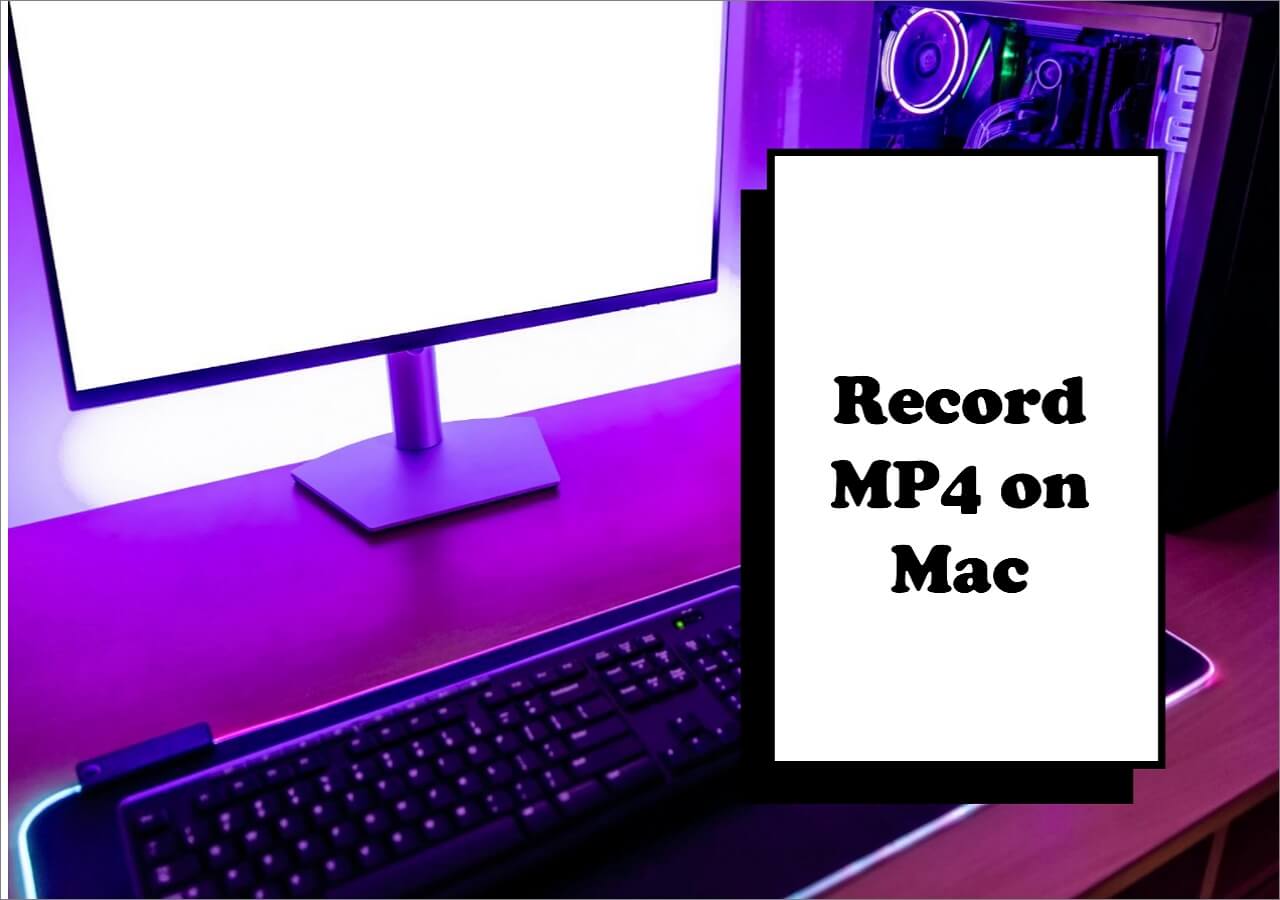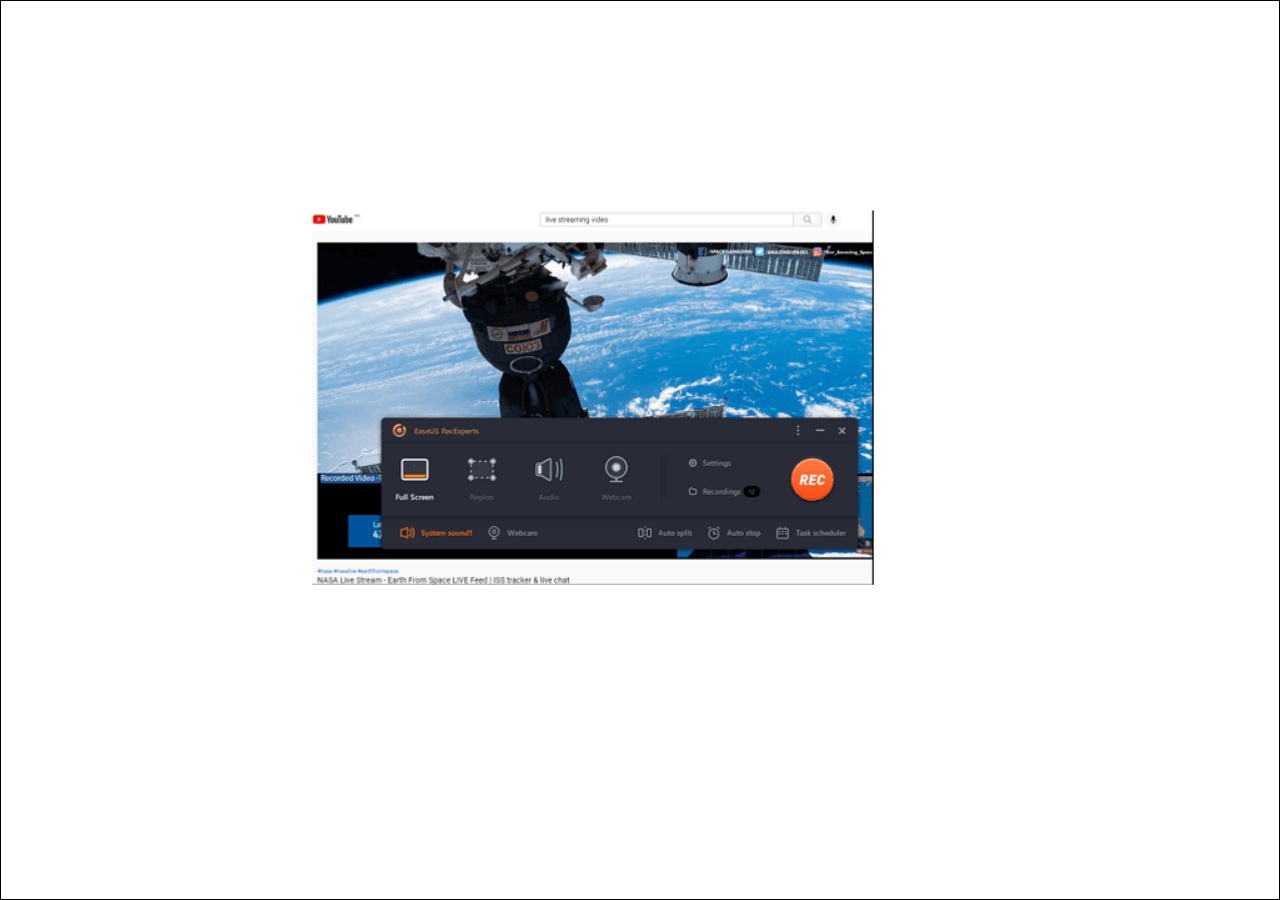-
![]()
Daisy
Daisy is the Senior editor of the writing team for EaseUS. She has been working in EaseUS for over ten years, starting from a technical writer to a team leader of the content group. As a professional author for over 10 years, she writes a lot to help people overcome their tech troubles.…Read full bio -
Jane is an experienced editor for EaseUS focused on tech blog writing. Familiar with all kinds of video editing and screen recording software on the market, she specializes in composing posts about recording and editing videos. All the topics she chooses …Read full bio
-
![]()
Alin
Alin is an experienced technical blog writing editor. She knows the information about screen recording software on the market, and is also familiar with data cloning and data backup software. She is expert in writing posts about these products, aiming at providing users with effective solutions.…Read full bio -
Jean is recognized as one of the most professional writers in EaseUS. She has kept improving her writing skills over the past 10 years and helped millions of her readers solve their tech problems on PC, Mac, and iOS devices.…Read full bio
-
![]()
Jerry
Jerry is a fan of science and technology, aiming to make readers' tech life easy and enjoyable. He loves exploring new technologies and writing technical how-to tips. All the topics he chooses aim to offer users more instructive information.…Read full bio -
![]()
Rel
Rel has always maintained a strong curiosity about the computer field and is committed to the research of the most efficient and practical computer problem solutions.…Read full bio -
![]()
Gemma
Gemma is member of EaseUS team and has been committed to creating valuable content in fields about file recovery, partition management, and data backup etc. for many years. She loves to help users solve various types of computer related issues.…Read full bio -
![]()
Shelly
"I hope my articles can help solve your technical problems. If you are interested in other articles, you can check the articles at the bottom of this page. Similarly, you can also check my Twitter to get additional help."…Read full bio
Page Table of Contents
0 Views |
0 min read
It's essential to screen-record a video with your story or other meetings for future reference. There are many options to record your PC's screen on Windows 10. For smooth recordings, you should know how to record screen in Windows 10 with audio without any software.
This post looks at how to record using the Xbox Game Bar and Snipping Tool, which are two built-in Windows screen recording features. It also examines how to use EaseUS RecExperts, the best third-party screen recorder for Windows 10.
#1. Screen Record in Windows 10 with Audio via Xbox Game Bar
Gamers initially used this built-in Windows tool to record gameplay. Users have recently extended its functions to recording video and audio for efficient screen recording. To use the tool, press Win + G to find the toolsets for the recording. The Xbox Game Bar has robust features that make it an efficient screen recorder. The features include:
● Game capture to take screenshots and record gameplay.
● Performance monitoring to track your computer performance.
● Capture any section of your screen.
● Share screen recordings with friends via chats.
● Audio controls feature during screen recording.
Wondering how to record screen with audio in Windows 10 using this tool? Follow these steps:
Step 1. Open Window settings and then tap "Gaming" > "Game Mode." Ensure the Game Mode is enabled.
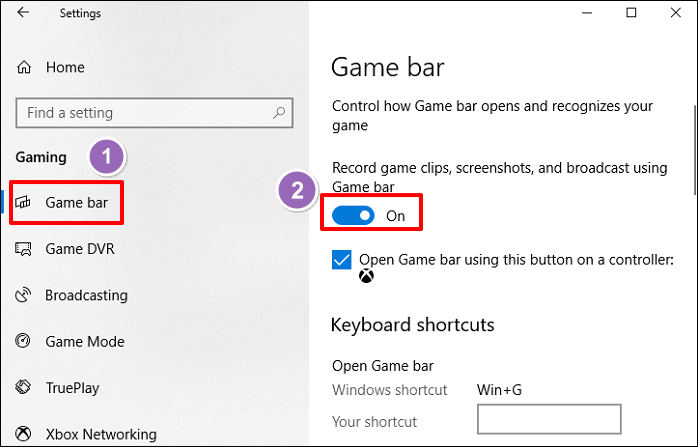
Step 2. Launch the application window to record, then turn off other audio or close all other windows. This ensures you record the right Windows screen.
Step 3. Press the Windows + G keys simultaneously. This opens the Xbox Game Bar, where you will see all the widgets in the top navigation.
Step 4. Click the "Capture" icon to capture the screen. Then, click the "camera" icon to begin the recording. You also capture your microphone audio at the same time.
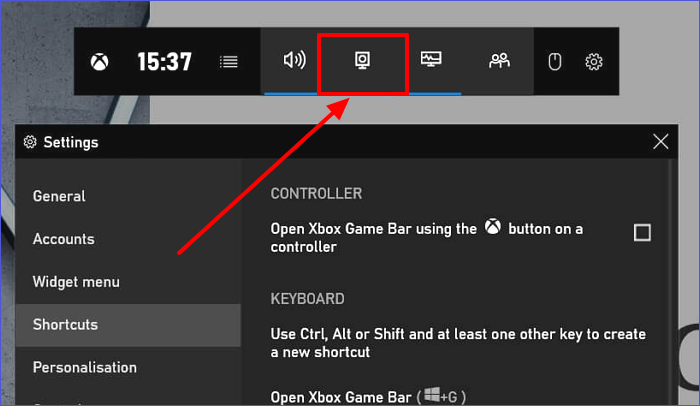
Step 5. Press Windows + ALT + R to end your video and audio recording.
Please share this post to help more users!
#2. Screen Record in Windows 10 with Audio via Snipping Tool
The Snipping Tool app is also a built-in screen recorder on Windows 10/11. It lets you capture your screen, create notes, save, and share with other users. You can save the recordings in AVI, MP4, and MOV formats. You'll need to update your OS to use this tool effectively.
The Snipping Tool allows you to protect your sensitive data by leveraging text redaction by using text actions on your recorded screen. In addition to recording visuals from your screens, the Snipping Tool captures sound using the Mic and audio support. You can also record YouTube videos with the Snipping Tool.
Below are the steps for how to record screen in Windows 10 with audio using the Snipping Tool app:
Step 1. Open the Snipping Tool on your PC (search it on the Search Bar) and click the Video Record icon. Next, click "New."
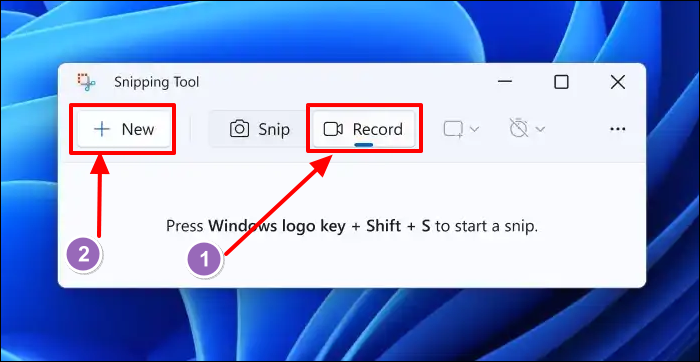
Step 2. A recording toolbar will then launch. Go to "Microphone">"Open Microphone privacy settings." Click the "Yes" button to continue.
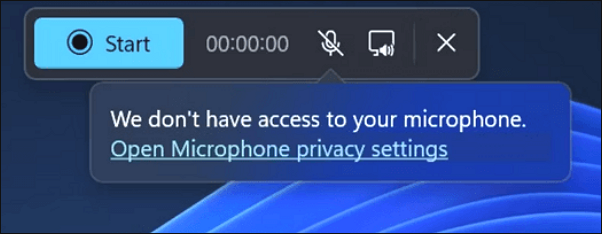
Step 3. Browse to the "Let apps and access your microphone" section. Next, toggle on the button under "Snipping Tool." This grants the app permission to use your system microphone.
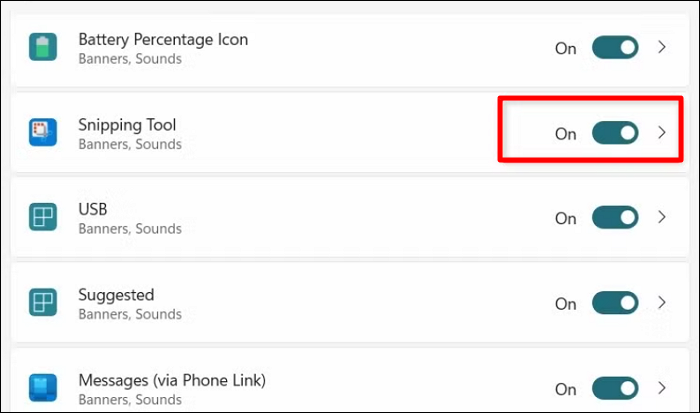
If you want to record the audio by default, choose the "three dots" at the top right corner, go to "Settings," then "Screen recording," and toggle on "include Mic input by default when the recording starts."
If you don't want to record the Mic by default, you should toggle off "include Mic input by default when the recording starts."
Bonus Tip: Screen Record in Windows 10 with Audio via Screen Recorders
In addition to using the built-in tools, you can record screens in Windows 10 with audio using third-party screen recorders like EaseUS RecExperts. These tools have robust features that allow recording audio from your internal system or microphone.
The tool stands out because of its high functionality in screen recording on Windows 10 with audio. It offers high-level flexibility whereby you can record multiple screens. You can also select a specific part of your screens to record in 2K, 4K, or HD resolution. Your internal audio will then get captured automatically during the recordings.
RecExperts also lets you capture streaming audio or record audio from YouTube. It provides clear audio recordings with its "AI-powered noise remover" feature. With the tool, it's possible to mute your screen recording without muting the recorded file. The software automatically saves all the recordings to your system.
Key Features
● Record your Windows 10 screen along with audio.
● It supports AI-powered noise removal for clear audio recordings.
● Extract audio recordings from videos.
● Capture your screen alongside the webcam for efficient recording.
● Record audio from the microphone or internal system.
● Mute your audio recording without muting the recorded file.
Step 1. Launch EaseUS RecExperts and adjust your recording settings.
Before you start recording, you can customize your settings by clicking the Menu icon (three horizontal lines) in the top-right corner and selecting Settings. From there, you can change the save location, video format, frame rate, audio format, and other preferences. All changes will be saved automatically.
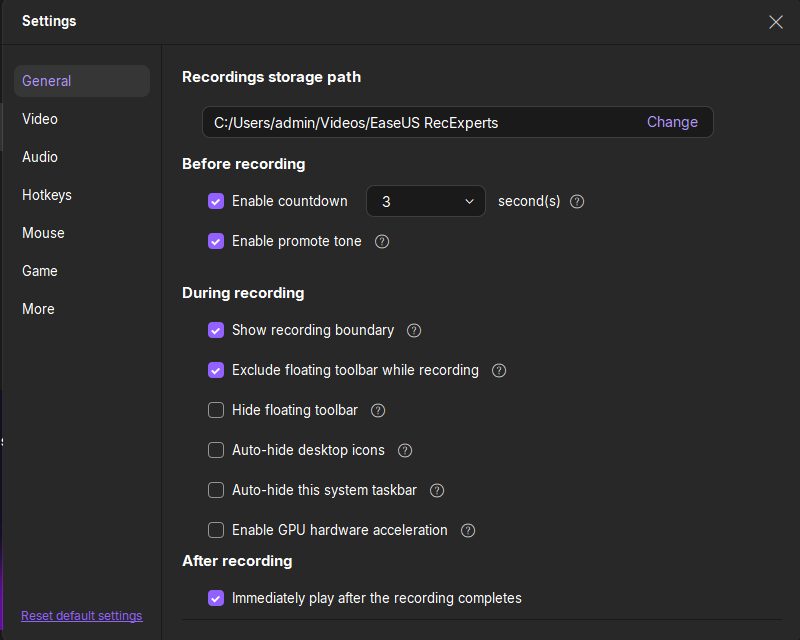
Step 2. Choose a recording mode based on your needs.
On the main interface, you'll see several recording options: Full Screen, Custom, Window, Game, Audio, and Webcam. Simply click the one that matches what you want to record.
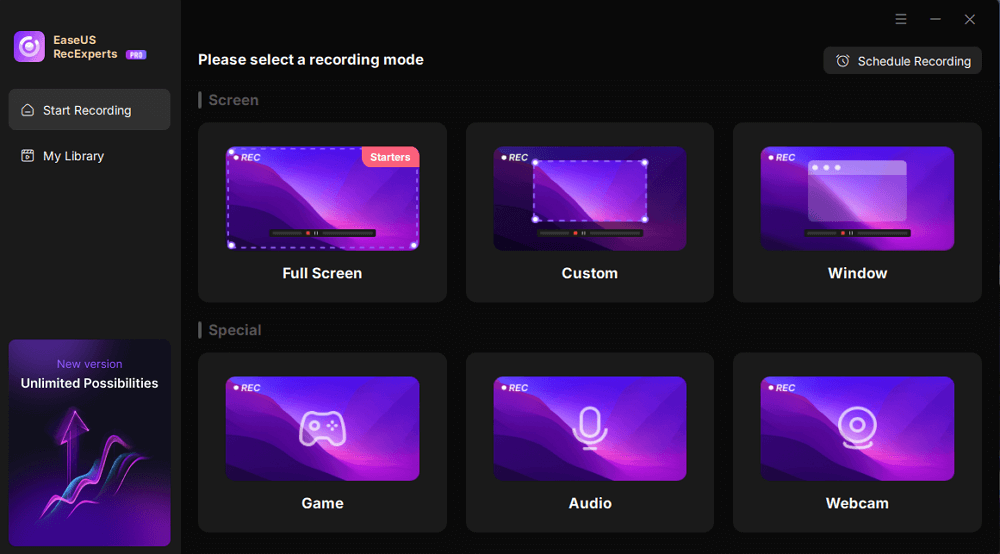
Step 3. Set up your webcam and audio sources.
In the toolbar, you can turn the Webcam, Speaker, and Microphone on or off by clicking their icons. If multiple devices are connected, click the small arrow next to each icon to choose your preferred input source.

Step 4. Start and control the screen recording.
Click the red REC button to begin recording. A floating toolbar will appear on your screen, where you can pause the recording using the pause icon or stop it by clicking the red square icon.
Step 5. Preview, edit, and manage your recordings.
Once you stop recording, you'll be taken to the preview window. Here, you can watch your video, trim it, add watermarks, transcribe audio to text, and organize your recordings. To record again with the same settings, just click the REC button in the top-left corner.
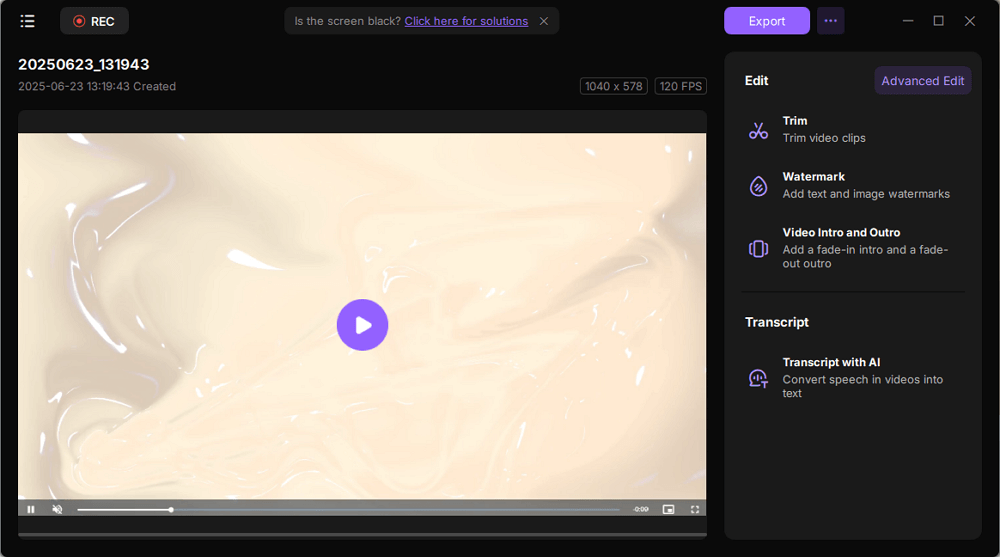
Conclusion
This article offers ways how to record screen in Windows 10 with audio without any software. The methods examined include using built-in Windows tools such as Xbox Game Bar, Snipping Tool, or this screen recorder, EaseUS RecExperts.You can use it to capture both video and audio on your computer. The tool lets you develop clear audio recordings due to its efficient AI-powered noise reduction feature. You can also extract audio from platforms like YouTube.
FAQs about Screen Record in Windows 10 with Audio
The common FAQs include:
1. Does Windows 10 Have a Built-in Screen Recorder?
YES. Windows 10 features built-in screen recorder tools, i.e., the Xbox Game Bar and Snipping Tool. These tools have features that allow you to record video and audio in real-time.
2. How Do I Record Internal Audio on Windows 10?
Try EaseUS RecExperts. This third-party audio recorder lets you capture audio from your microphone or the internal system. It allows you to select your audio sources before you initiate your screen recording. Its AI-powered noise reduction feature ensures that you come up with clear recordings.
3. How to Record Voice Over Video in Clipchamp?
Follow these steps:
Step 1. Import your video by clicking the Import Media button on the toolbar to source the files from your computer.
Step 2. Move your video to the timeline.
Step 3. Select the voice recorder and give access to Mic.
Step 4. Record your voice-over with the voice recorder.
Step 5. Preview your video and then click Save.
Please share this post to help more users!
EaseUS RecExperts

One-click to capture anything on screen!
No Time Limit, No watermark
Start Recording
